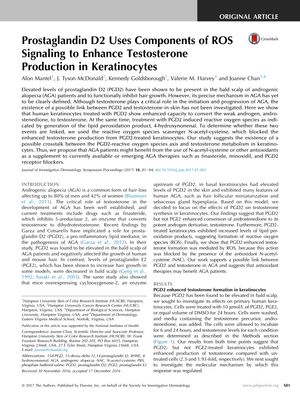TLDR Prostaglandin D2 increases testosterone production in skin cells through a process involving reactive oxygen species, and antioxidants may help treat hair loss.
The study explored the effect of prostaglandin D2 (PGD2) on testosterone production in human keratinocytes, finding that PGD2 increased the conversion of androstenedione to testosterone, a process that was associated with a rise in reactive oxygen species (ROS), as evidenced by the presence of the lipid peroxidation marker 4-hydroxynonenal (4HNE). The use of the antioxidant N-acetyl-cysteine (NAC) was shown to inhibit the PGD2-induced testosterone increase, indicating the involvement of ROS in this mechanism. These results suggest a link between the PGD2-ROS axis and testosterone metabolism in keratinocytes, which may play a role in the development of androgenic alopecia (AGA), and propose that antioxidants like NAC could potentially enhance AGA treatment. The study did not specify the number of subjects involved and did not provide specific results or conclusions from the ELISA kit and immunofluorescence experiments. The research received institutional support and had no declared conflicts of interest.
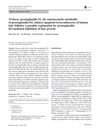 11 citations
,
May 2016 in “Naunyn-Schmiedeberg's Archives of Pharmacology”
11 citations
,
May 2016 in “Naunyn-Schmiedeberg's Archives of Pharmacology” A substance called 15-deoxy prostaglandin J2 can cause hair follicle cells to die, which might explain how prostaglandin D2 can lead to hair loss.
 12 citations
,
February 2016 in “Biochemical and Biophysical Research Communications”
12 citations
,
February 2016 in “Biochemical and Biophysical Research Communications” Sulforaphane may help with hair growth by breaking down a hormone that causes hair loss.
62 citations
,
July 2013 in “American Journal of Clinical Dermatology” Alopecia areata patients have higher oxidative stress and lower antioxidant levels.
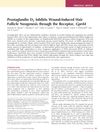 68 citations
,
November 2012 in “Journal of Investigative Dermatology”
68 citations
,
November 2012 in “Journal of Investigative Dermatology” Prostaglandin D2 blocks new hair growth after skin injury through the Gpr44 receptor.
 205 citations
,
March 2012 in “Science Translational Medicine”
205 citations
,
March 2012 in “Science Translational Medicine” PGD2 stops hair growth and is higher in bald men with AGA.
 198 citations
,
October 2011 in “Journal der Deutschen Dermatologischen Gesellschaft”
198 citations
,
October 2011 in “Journal der Deutschen Dermatologischen Gesellschaft” Use minoxidil for hair loss; finasteride and dutasteride for men, dutasteride for women.
103 citations
,
April 2005 in “Experimental dermatology” Prostaglandin F2alpha and related compounds can increase hair growth and darken hair in mice.
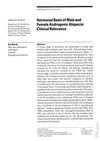 23 citations
,
January 1994 in “Skin Pharmacology and Physiology”
23 citations
,
January 1994 in “Skin Pharmacology and Physiology” Hair loss in men and women is linked to high stress hormone levels and other hormonal imbalances, suggesting treatments should be customized to each person's hormones.
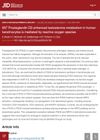 1 citations
,
April 2016 in “Journal of Investigative Dermatology”
1 citations
,
April 2016 in “Journal of Investigative Dermatology” Prostaglandin D2 increases testosterone levels in skin cells through reactive oxygen species, not enzymes, which could lead to new hair loss treatments.
October 2022 in “The Korean Journal of Physiology and Pharmacology” Targeting the PGD2-DP2 pathway may help treat hair loss.
 8 citations
,
February 2019 in “Journal of The European Academy of Dermatology and Venereology”
8 citations
,
February 2019 in “Journal of The European Academy of Dermatology and Venereology” 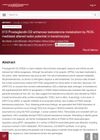 September 2017 in “Journal of Investigative Dermatology Symposium Proceedings”
September 2017 in “Journal of Investigative Dermatology Symposium Proceedings” Prostaglandin D2 increases testosterone production in skin cells through a process involving reactive oxygen species, which could be a new target for treating hair loss and other skin conditions driven by testosterone.
 January 2025 in “Dermatologic Therapy”
January 2025 in “Dermatologic Therapy” Targeting multiple pathways may improve treatments for androgenetic alopecia.
